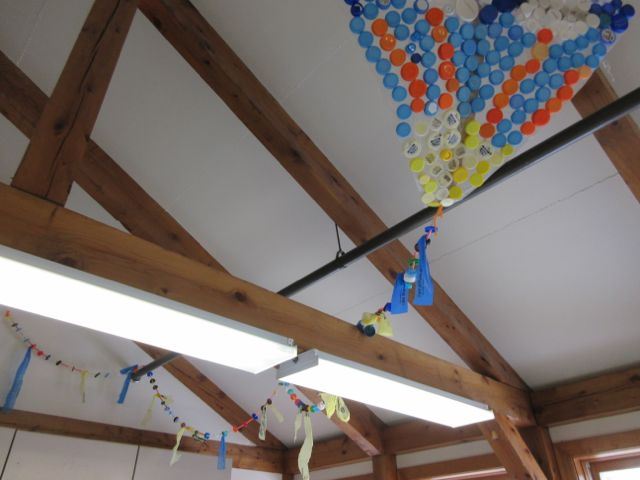Oh, the learning joy!
science
START Tundra Choreography
These penguins danced the cold away!
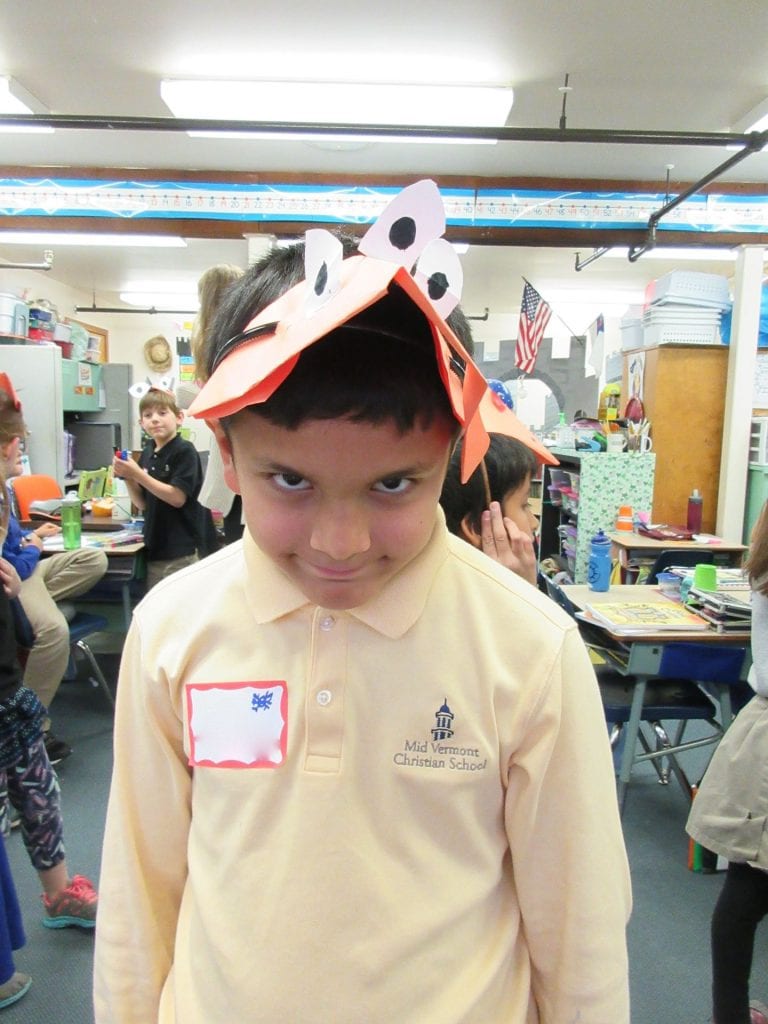

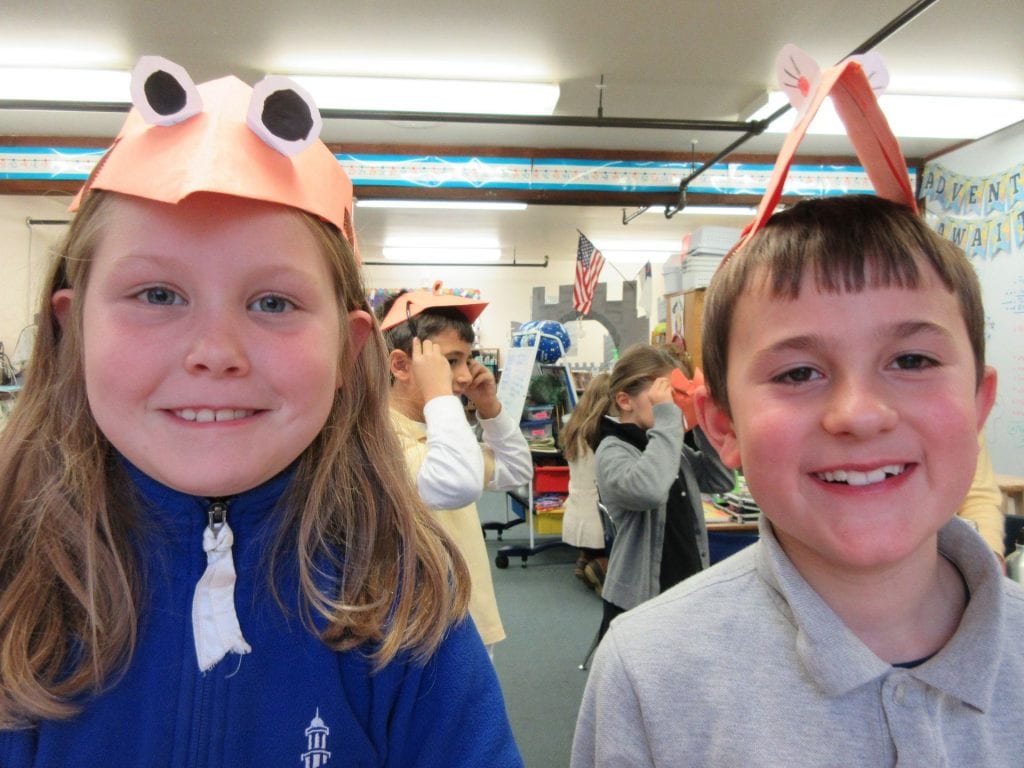
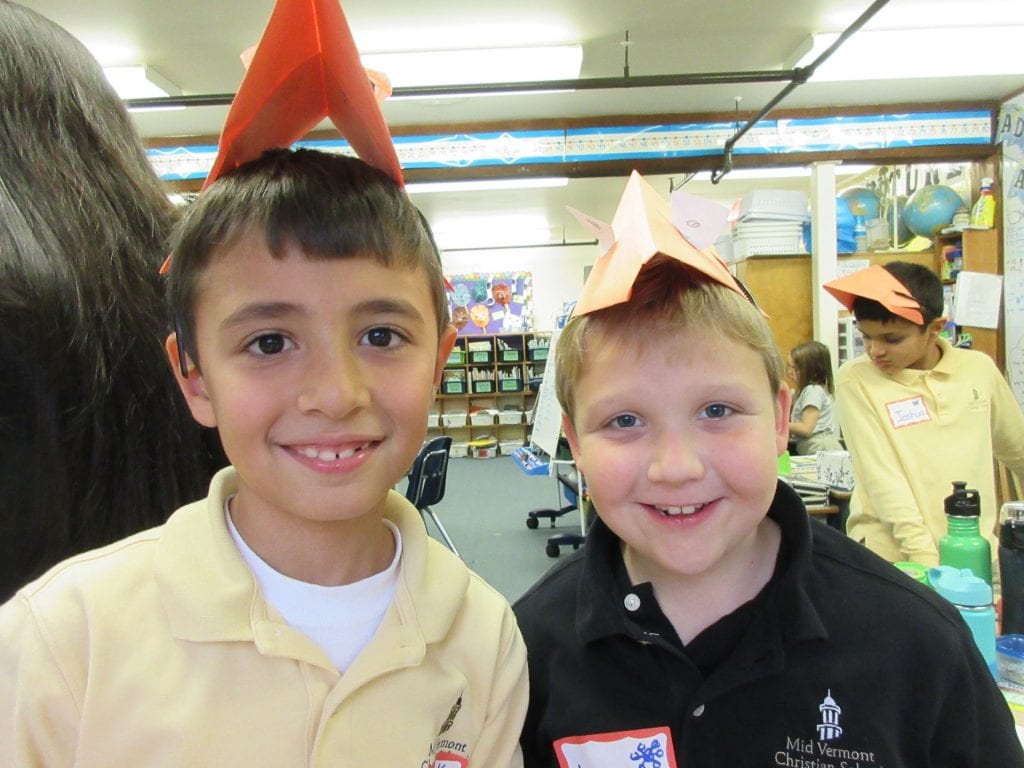

START Under the Sea
After brainstorming information about the daylight, twilight, and midnight ocean layers, we used paper plates in a host of ways to create ocean creatures. With lights, flashlights, and no lights, we simulated swimming in our proper layers. Pretty fishy around here!
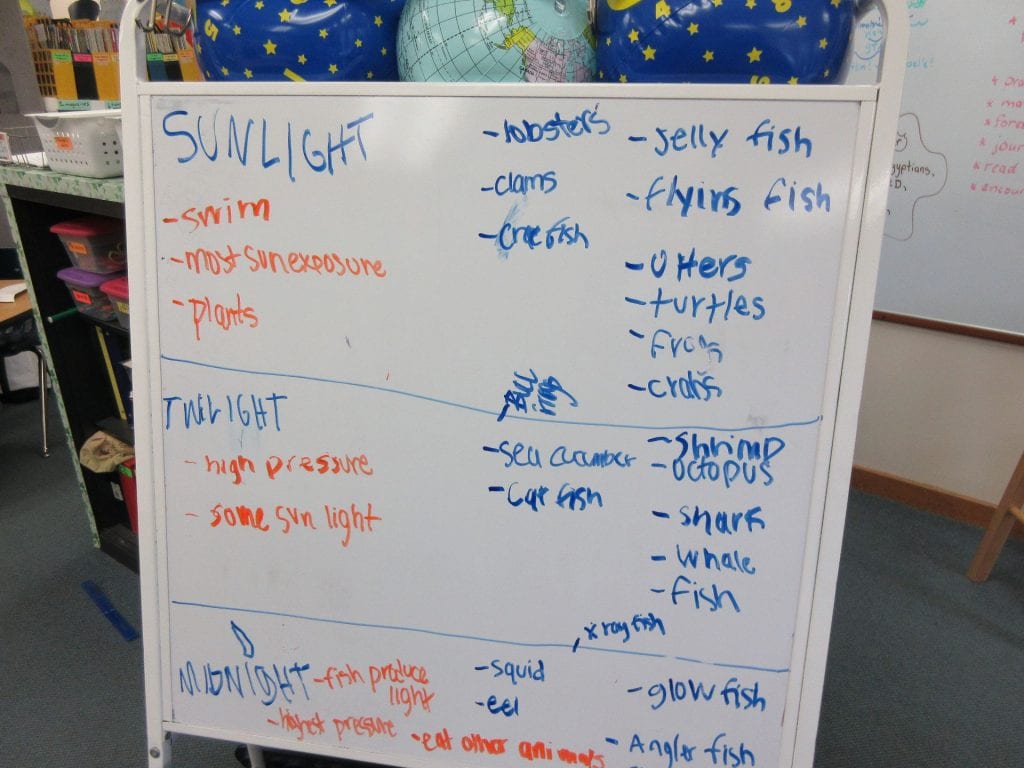
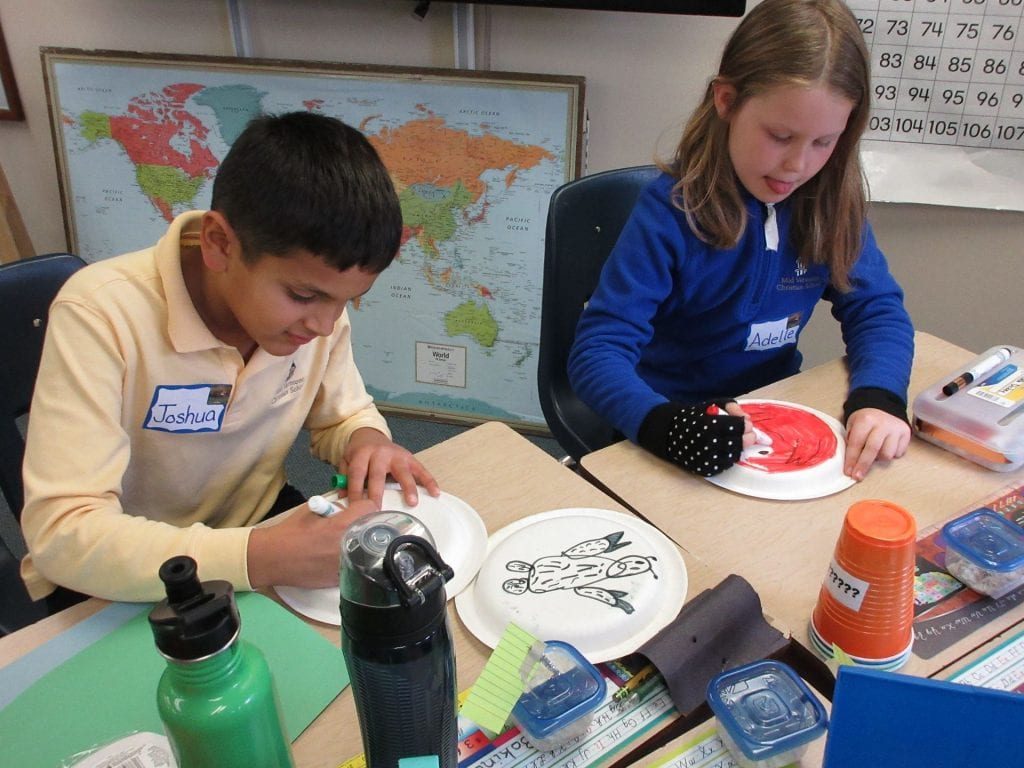
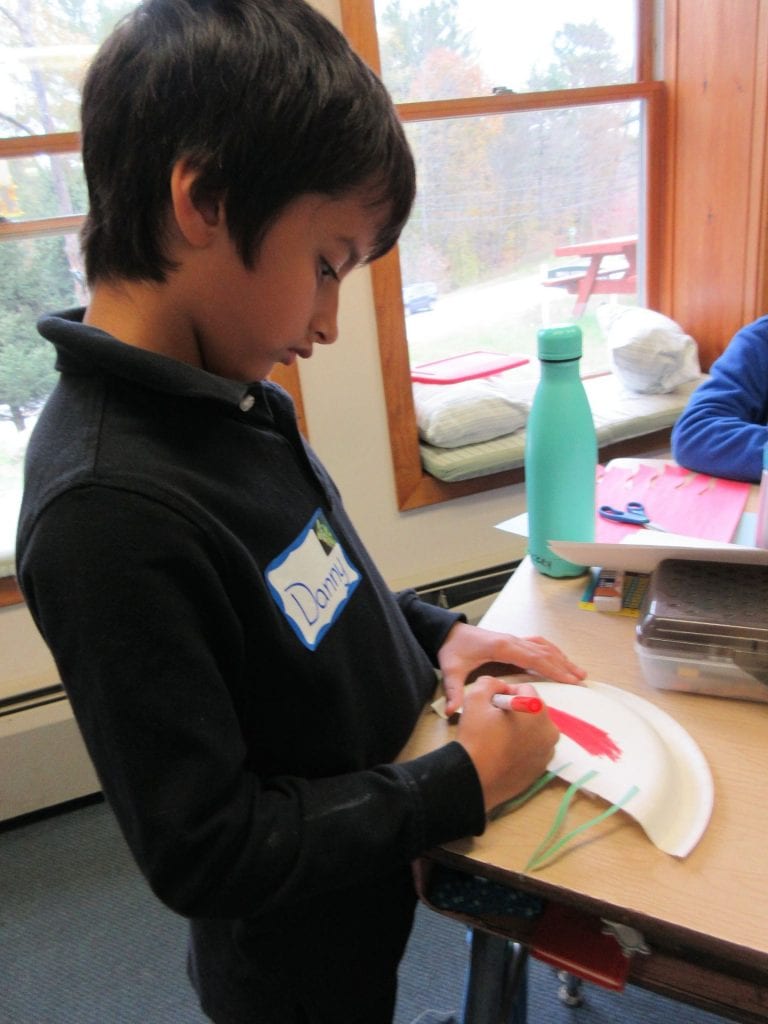

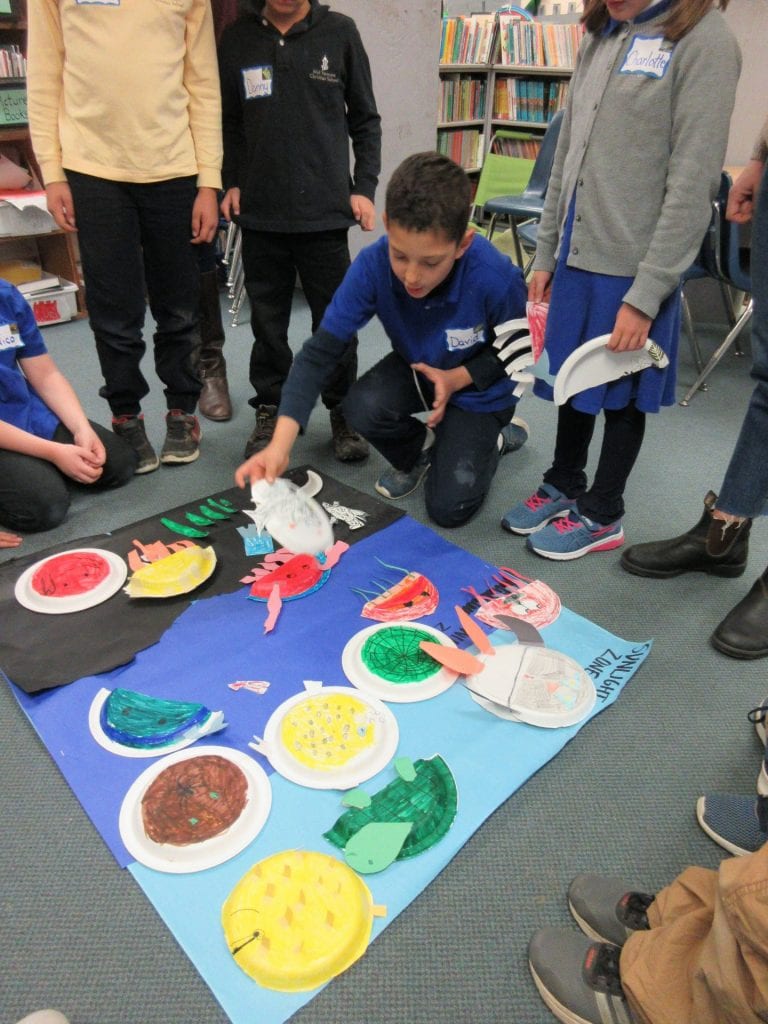
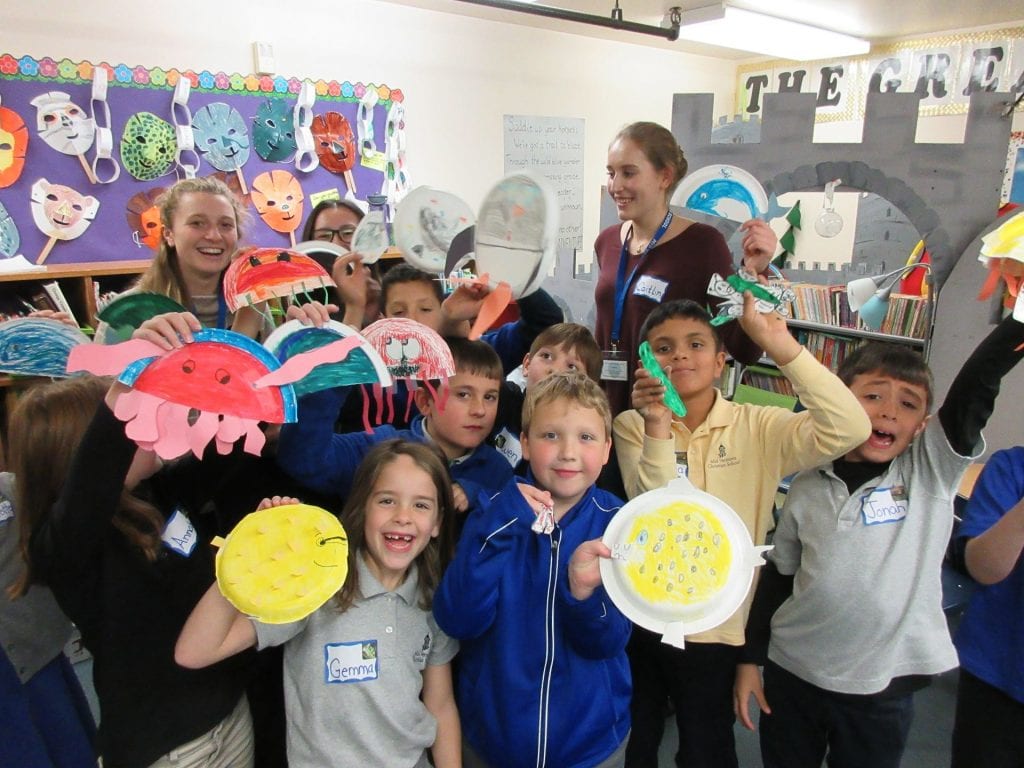
START Explores the Rain Forest
What a week! START guided us in investigating layers of the rain forest. Then we made rain forest rain sticks and performed a song about the layers using them.
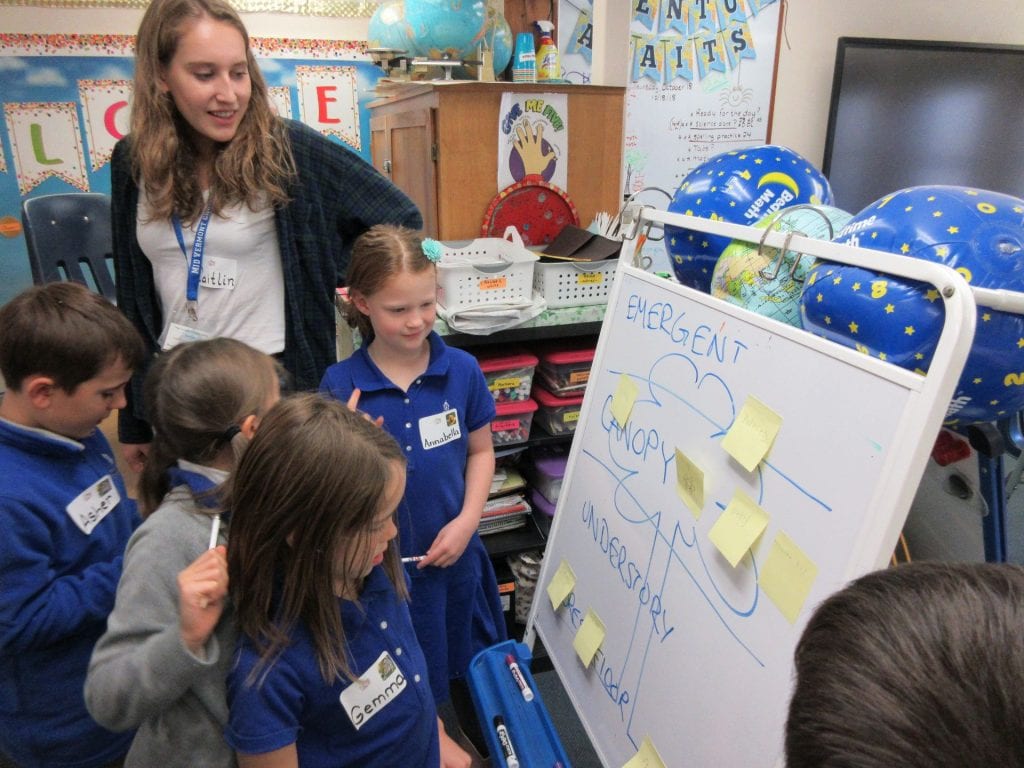
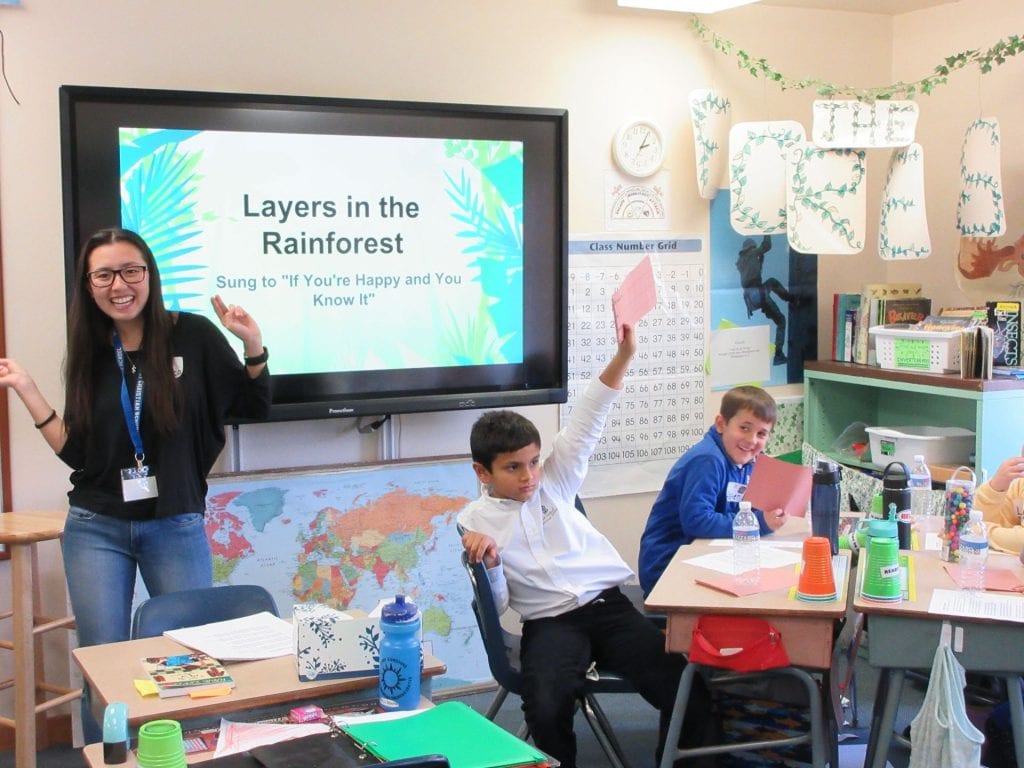
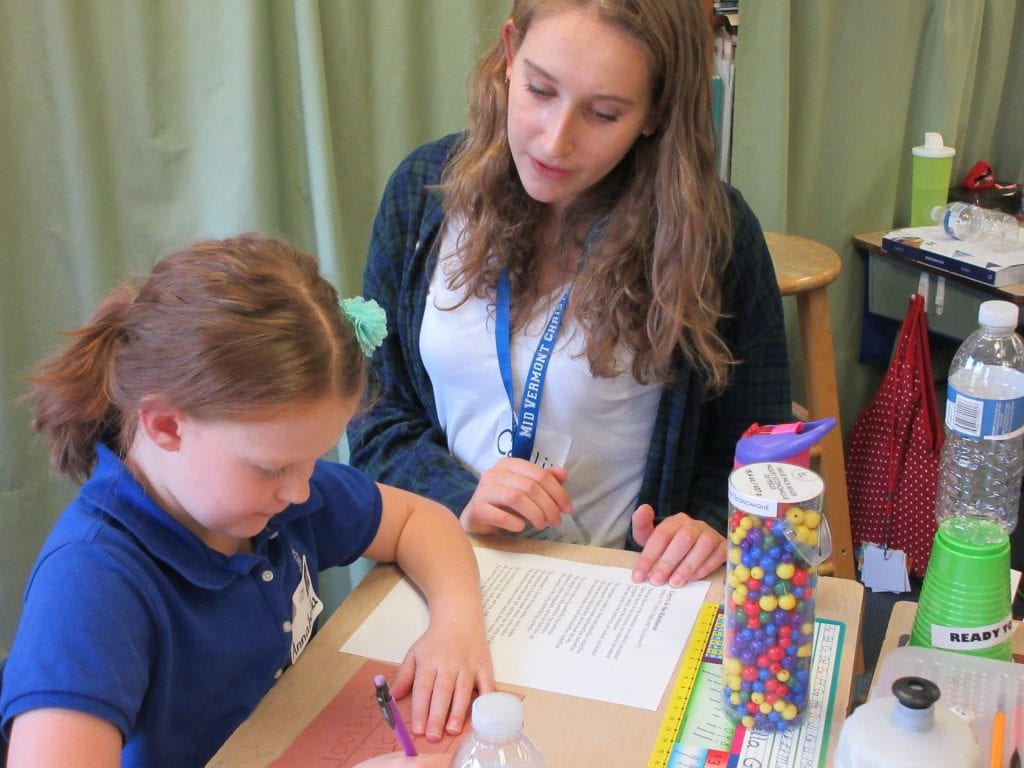
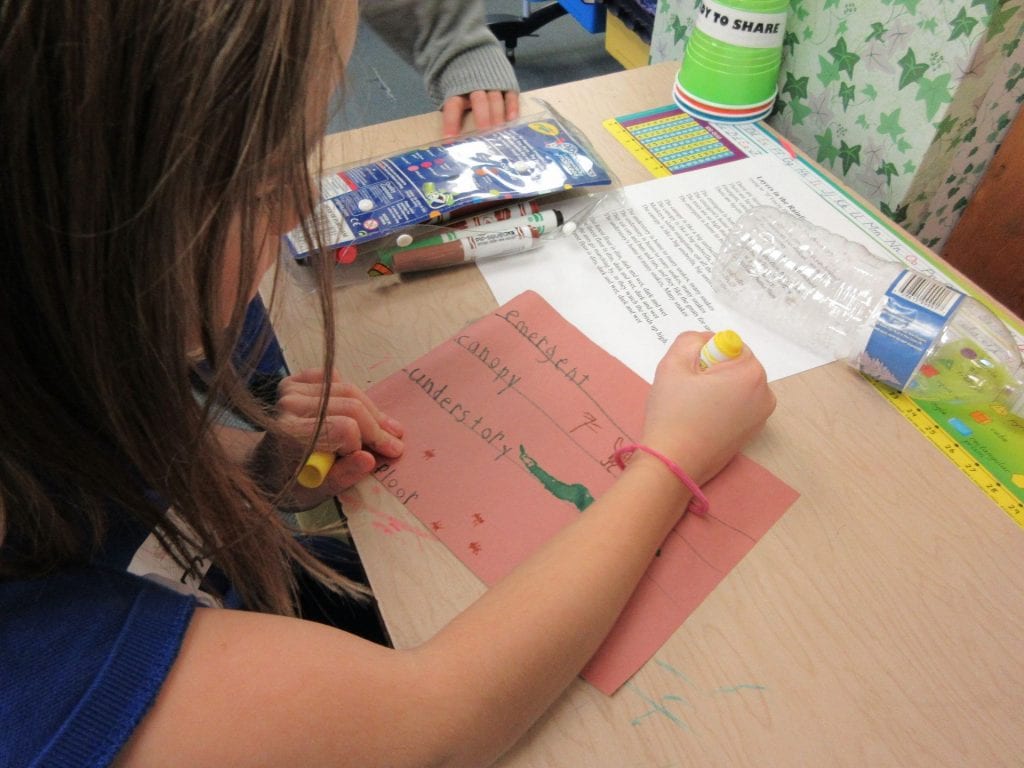
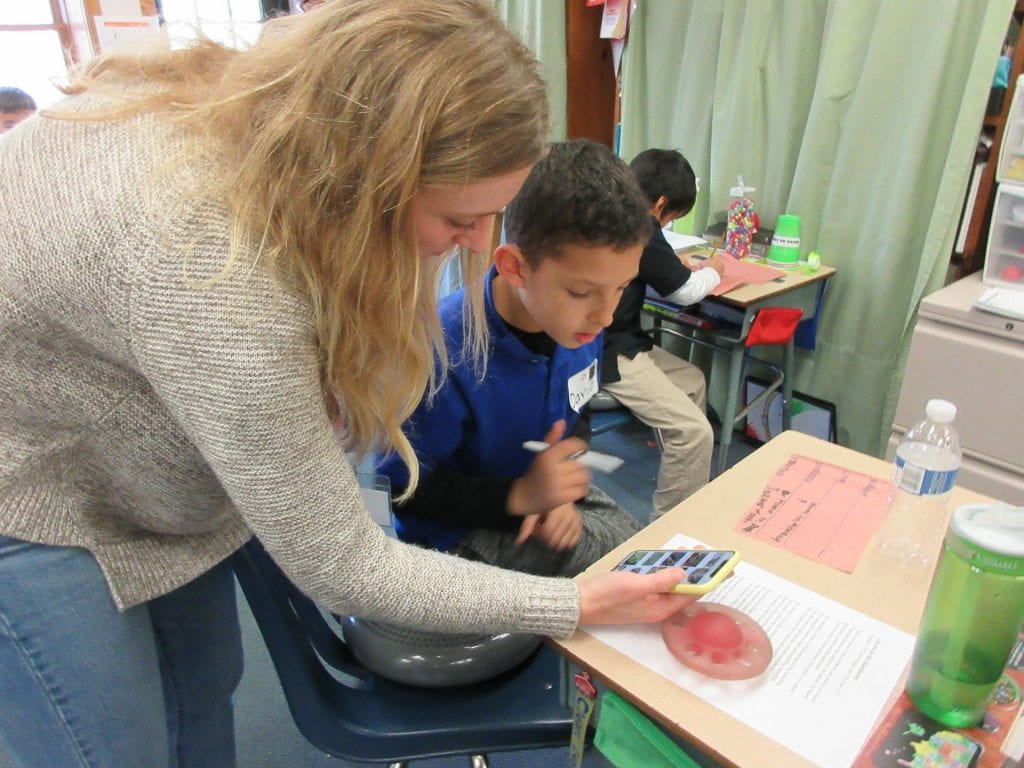
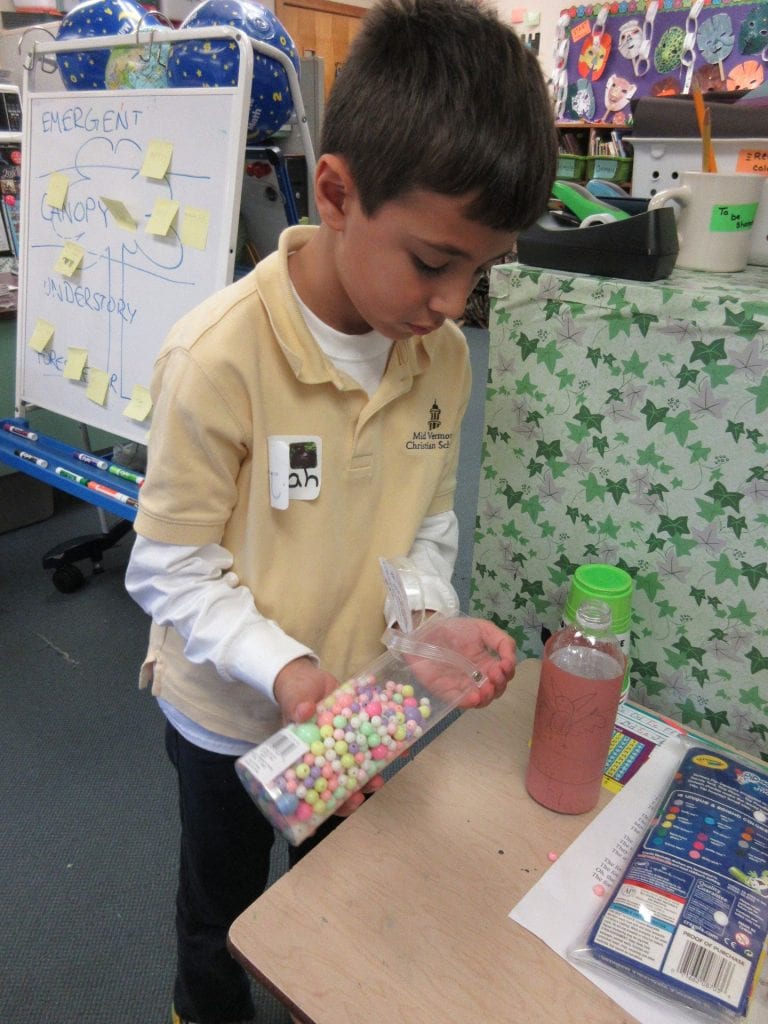

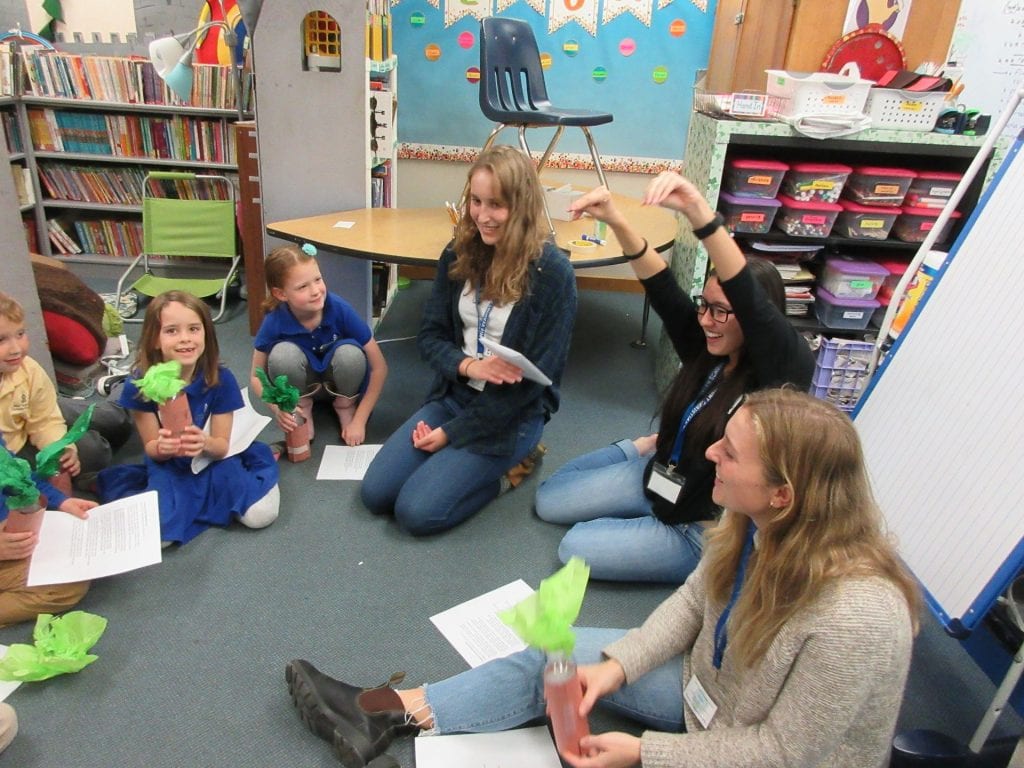
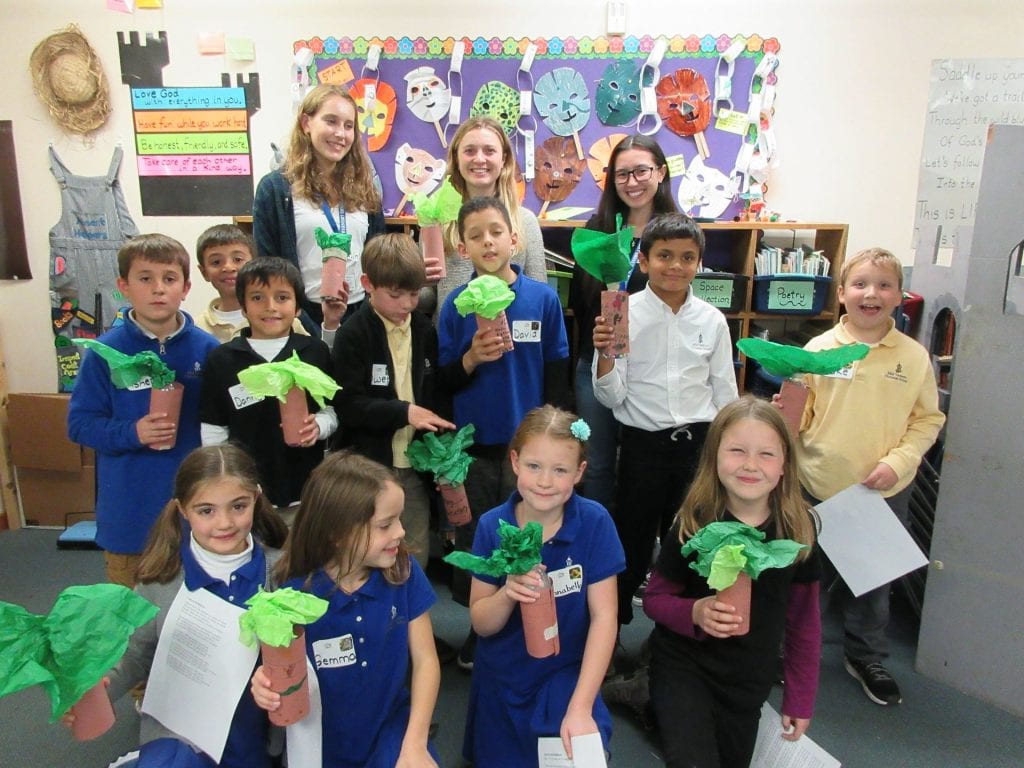
Exploring the Savanna with START
Our investigation of animals and habitats continued into the savanna, with fantastic activities involving food chains and food webs that got us thinking more deeply.
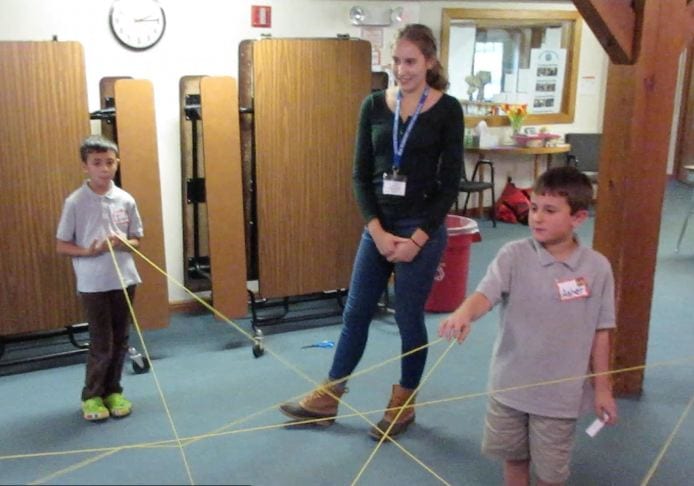
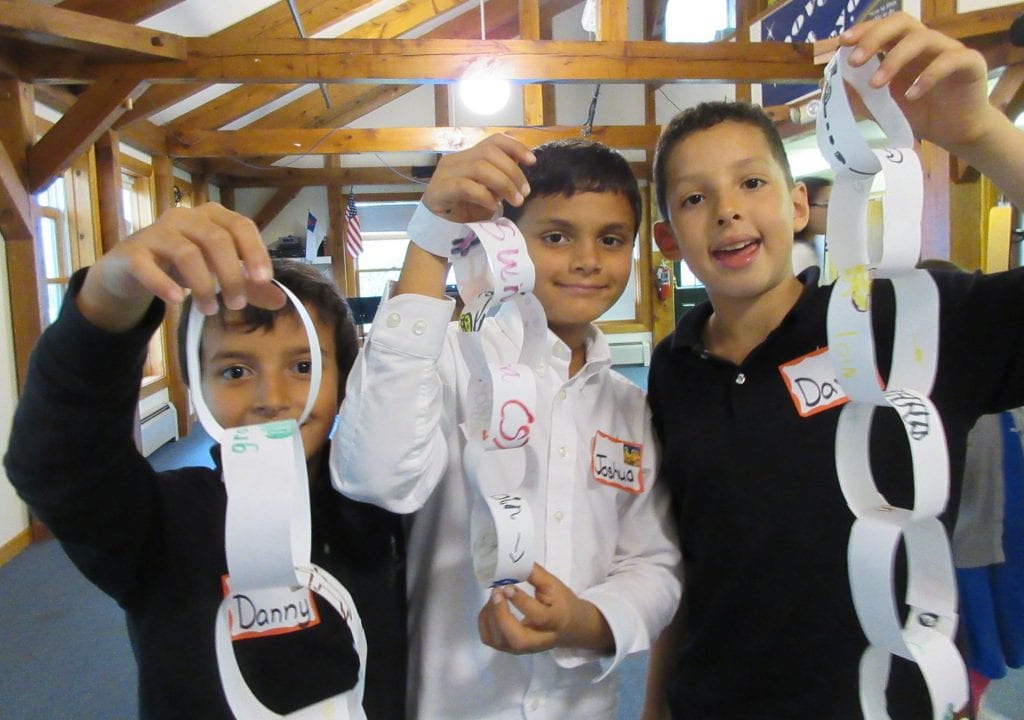
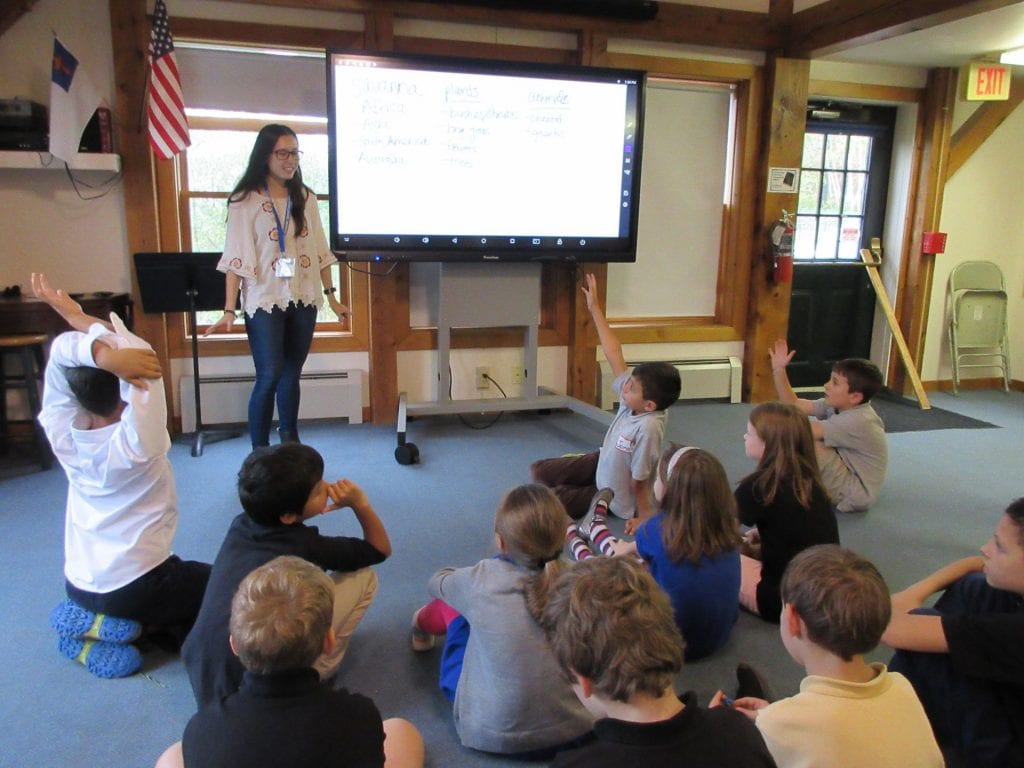
START Week 1: Overview of Habitats
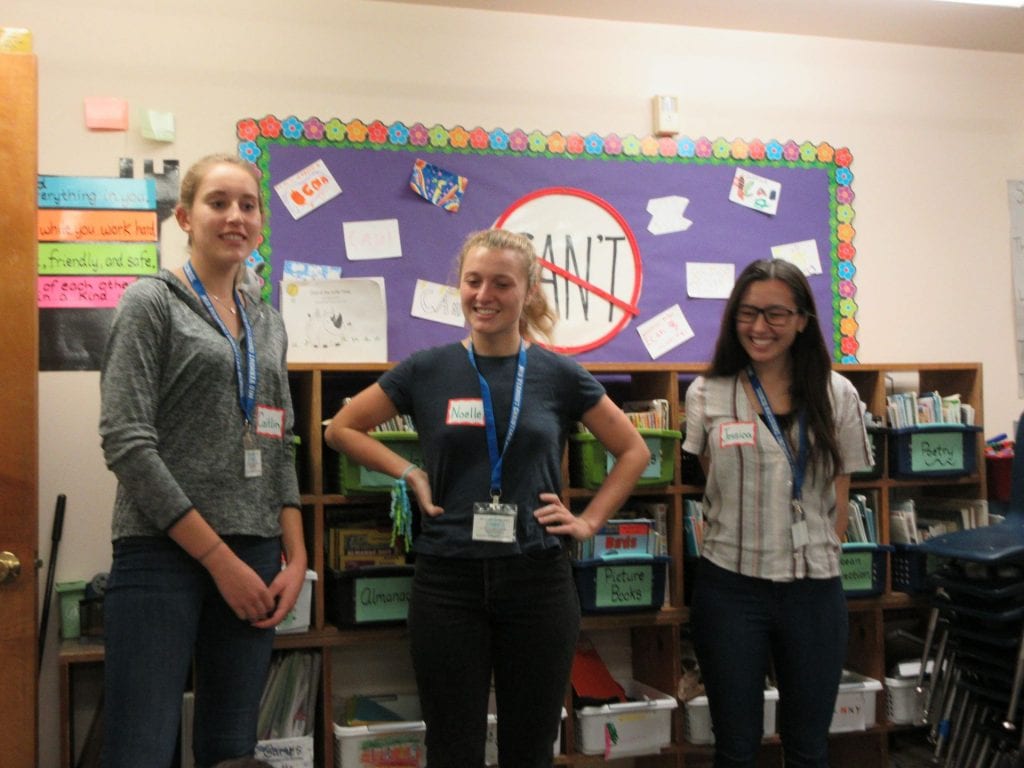
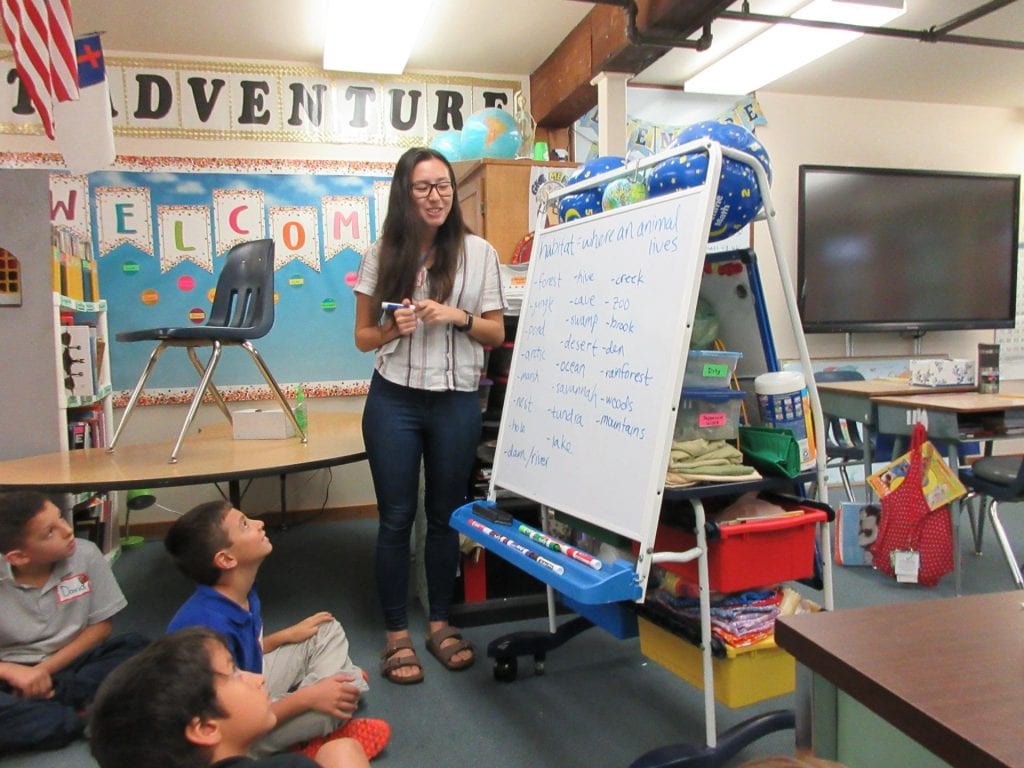
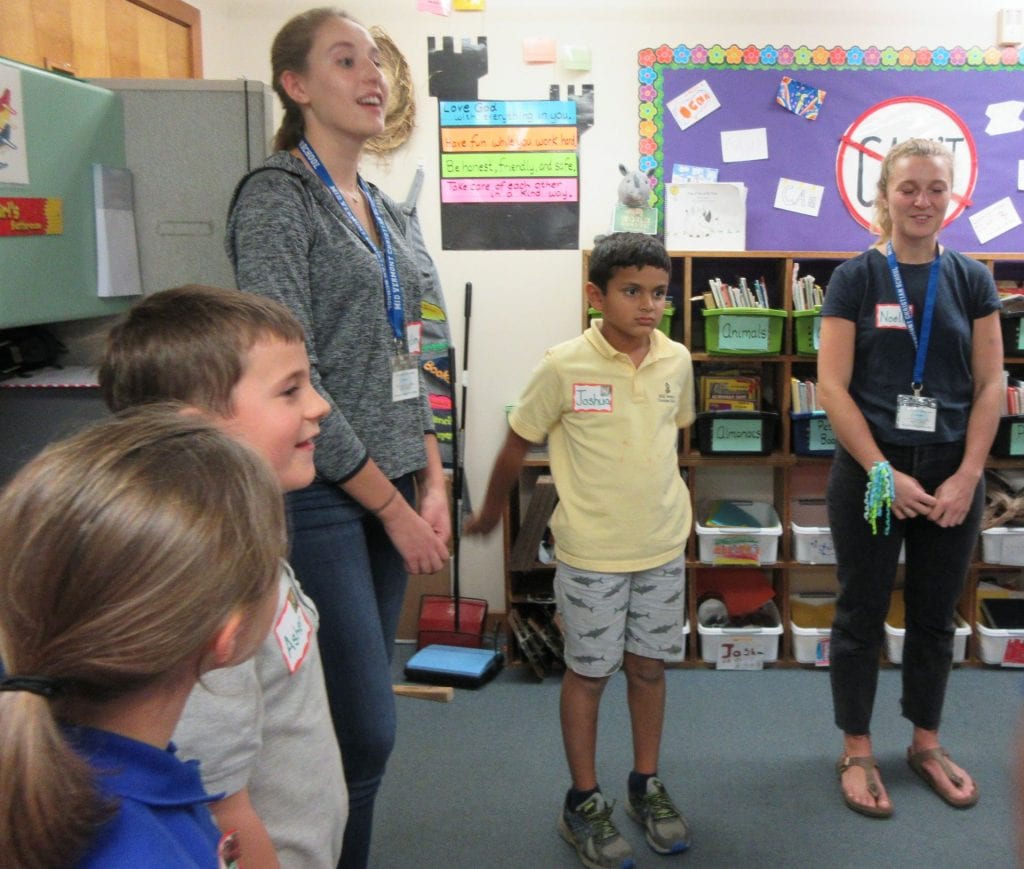
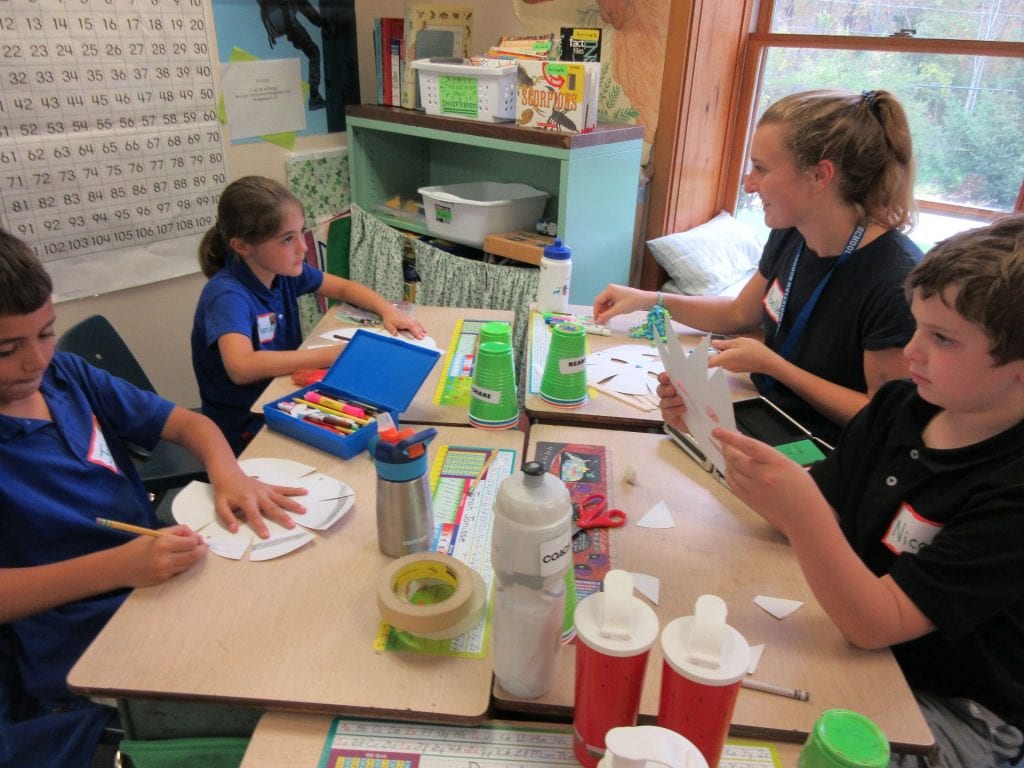
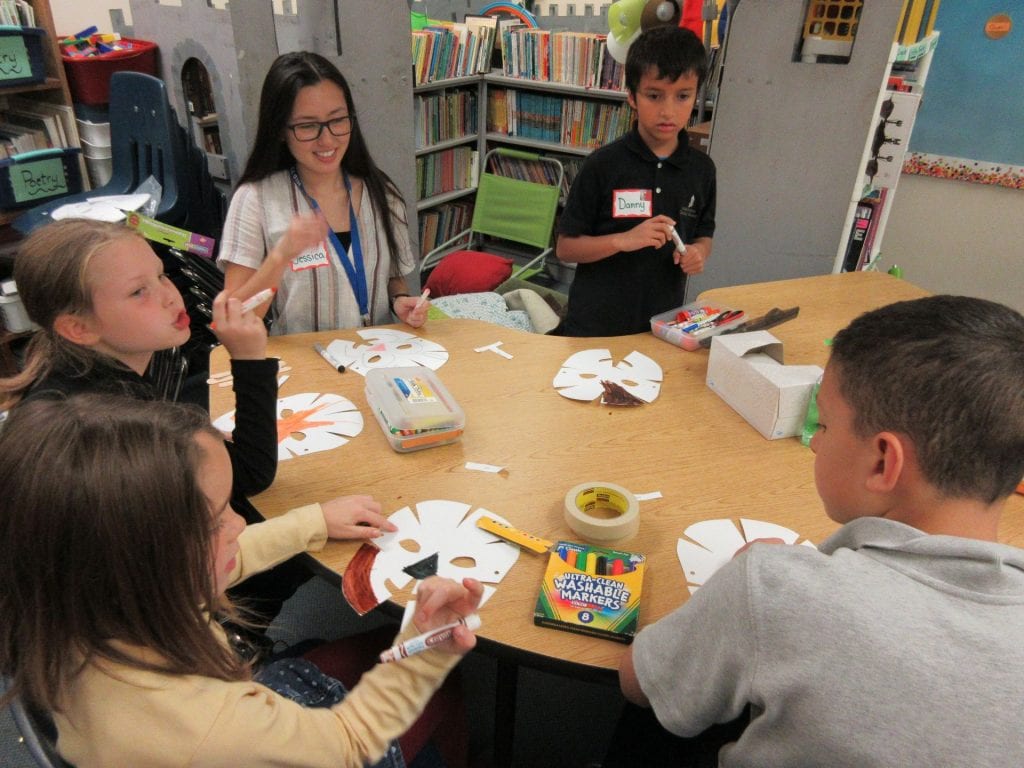
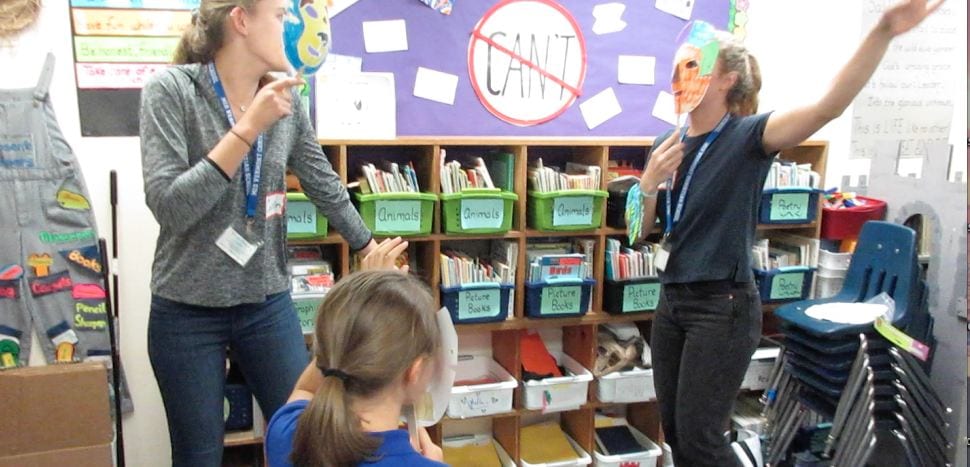
Electricity at the Montshire!
Rock On, Mrs. Oberkotter!
To put the crowning touches on our rocks and minerals unit, rock hound Ellen Oberkotter visited and shared her expertise. She brought samples of all kinds of treasures she has found, and best of all, she relayed a gigantic passion for exploring rocks that was so contagious.
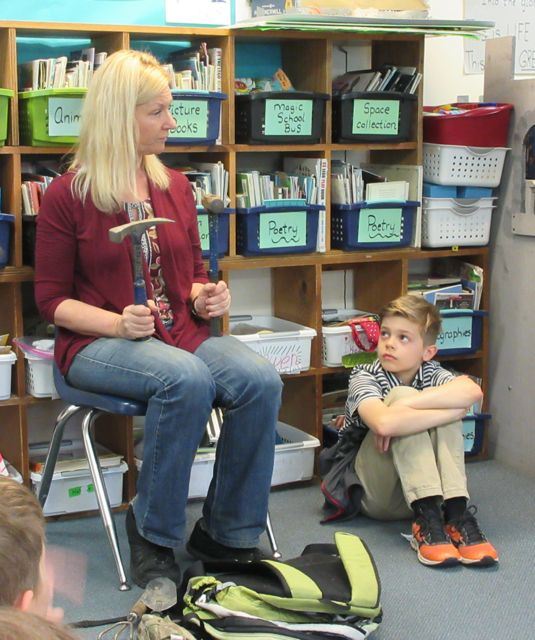
How to be prepared for your rock hunting.
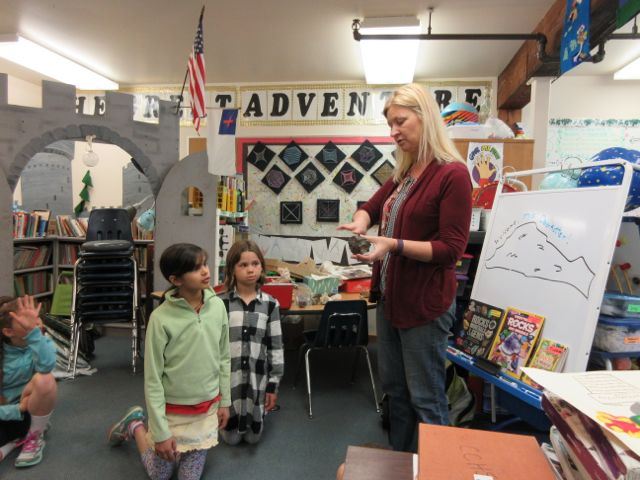
Learning and getting a close up look.
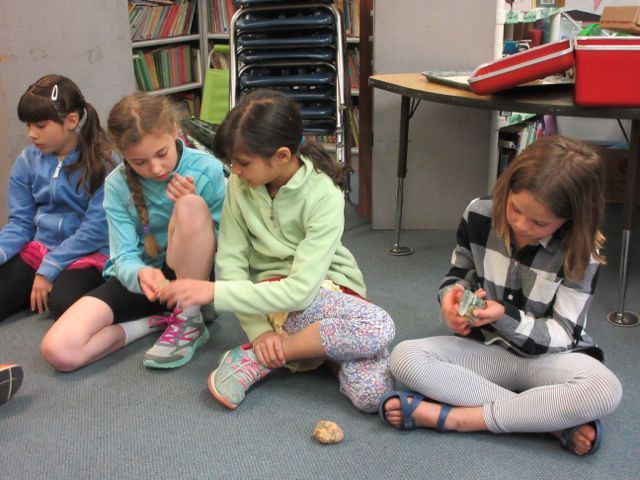
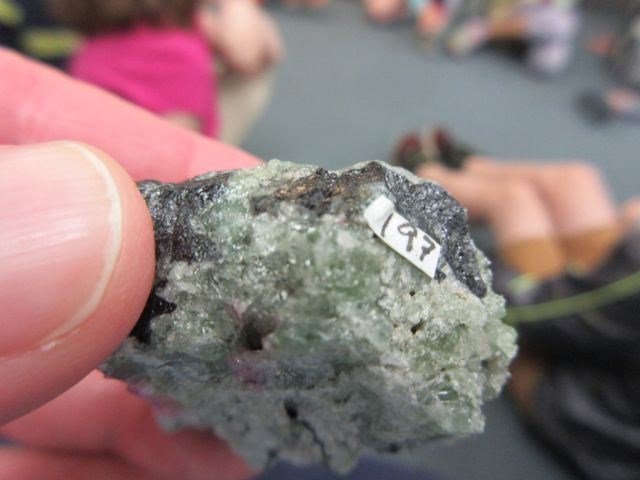
Scientists carefully record the date and location of each rock discovery, which we learned was called the provenance.
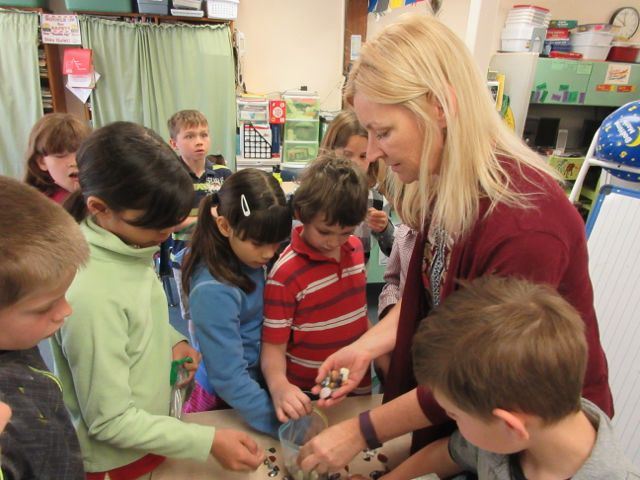
Mrs. Oberkotter even generously shared samples of various rocks to add to our own collections.
Stay Curious . . . .
Do rocks still stir your curiosity? Many of us have collected rocks at one point or another in our lives. Our class is “digging” into rocks and landforms during our earth science unit, and our investigations have been fascinating.
We asked, “Could a volcano pop up in your backyard?” To come to a logical answer, we graphed active volcanoes continent by continent and examined patterns. (Spoiler Alert: NH and VT geologists probably should not hold their breath waiting for one.)
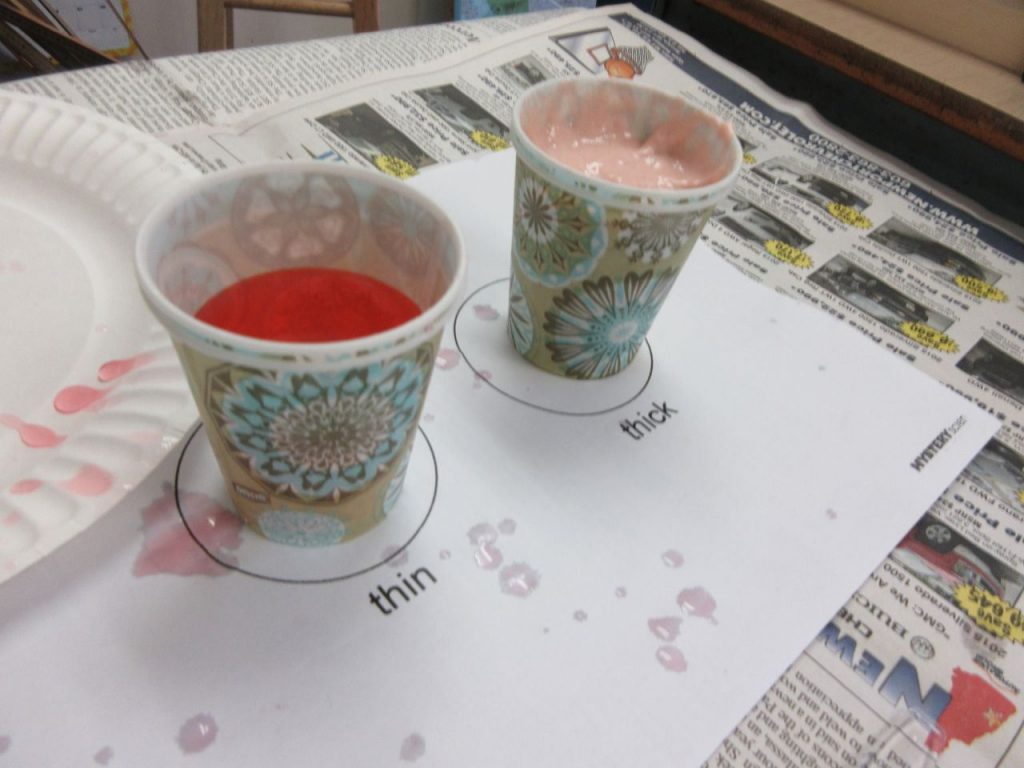
We asked, “Why do some volcanoes ooze and some explode?” Using thick “lava” and thin “lava”, we blew bubbles and poured lava to help us come to some conclusions.
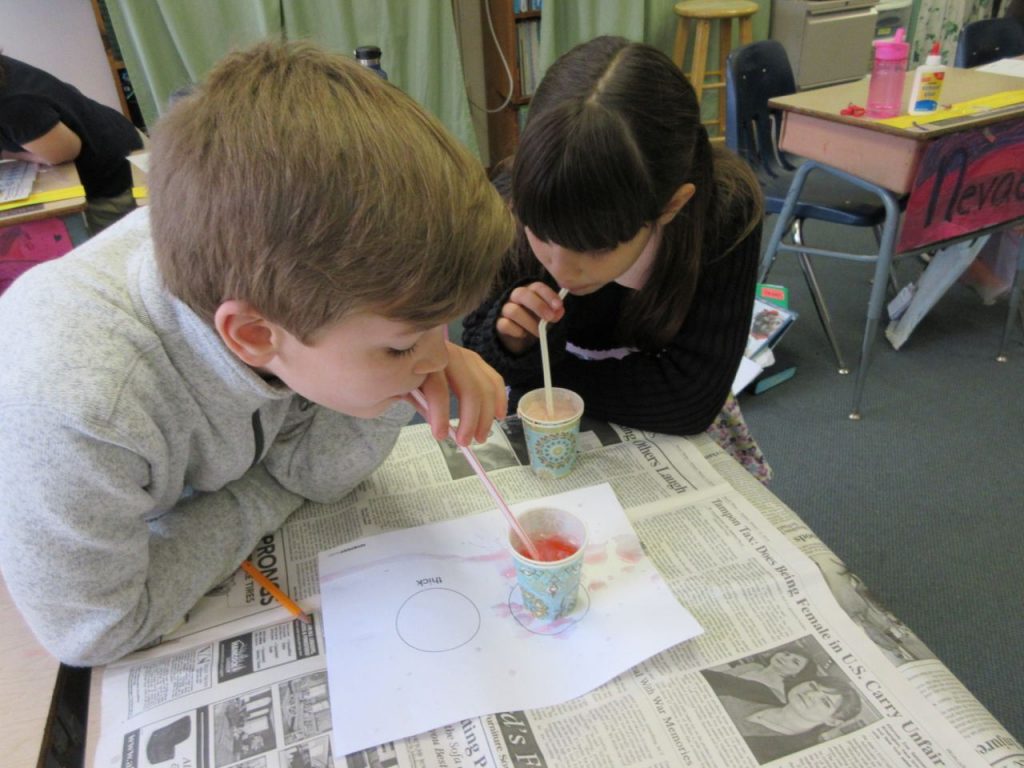
This week’s curiosity question was, “Will a mountain last forever?” We learned all about tree wedging and ice wedging, and then we did a sugar shake to simulate how rocks might wear down as they bump and fall down a tall mountain.
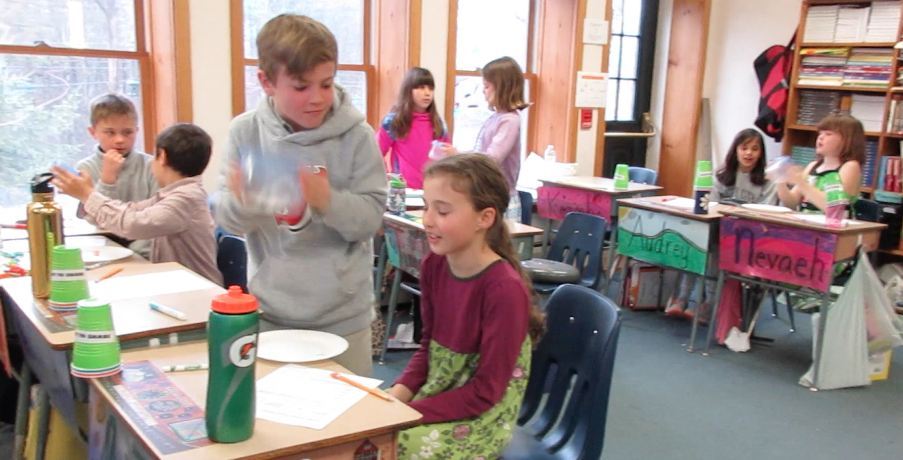
First, we colored the edges of a sugar cube. Then we shook it together with three other sugar cube “rocks.” We recorded our observations after every forty shakes with drawings and by counting how many edges still had colored marker showing.
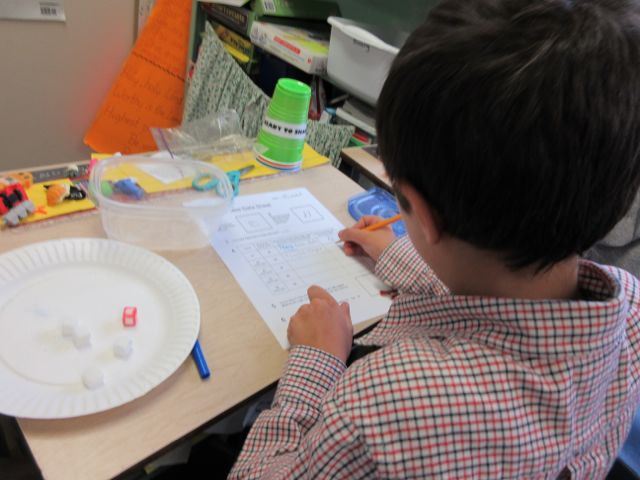
After two hundred shakes, we could imagine what rocks battered by ocean waves against cliffs or rocks tumbling down mountainsides might look like, plus our containers were filled with sugar “sand.”
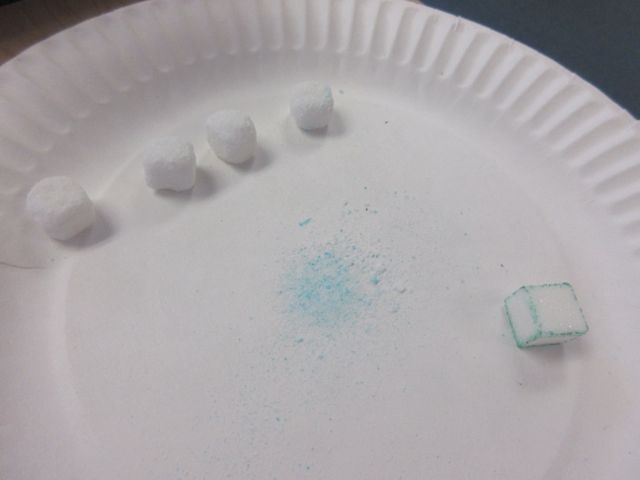
Sneak peek: Next week’s curiosity question is, “How could you survive a landslide?” Don’ t you wish you could join us?
Earth ALIVE: Are You Reusing?
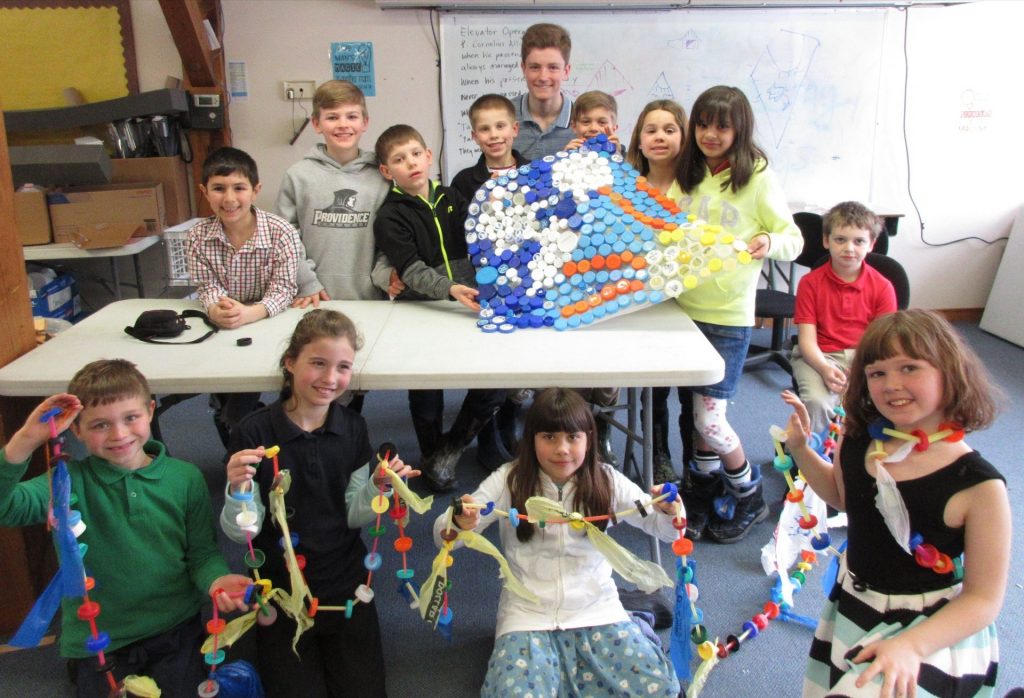
As part of his environmental science Hornaday Medal project for the Boy Scouts, Wesley Stocken (former MVCS student) posed this question to the 2nd/3rd graders as a year-long challenge. Could you reuse more? Throughout the year so far, opportunities to reuse things rather than discard them or even recycle them have come again and again. The students have had significant conversations regarding their own reusing habits, and everyone is looking at recyclables in a new way thanks to Wesley’s leadership.
One of the aspects of the challenge Wesley chose was to have the students collect bottle caps. While living in California for a year, he noticed the beaches littered with bottle caps. These usually are not allowed in local plastics recycling. Could reusing even something this small make a difference?
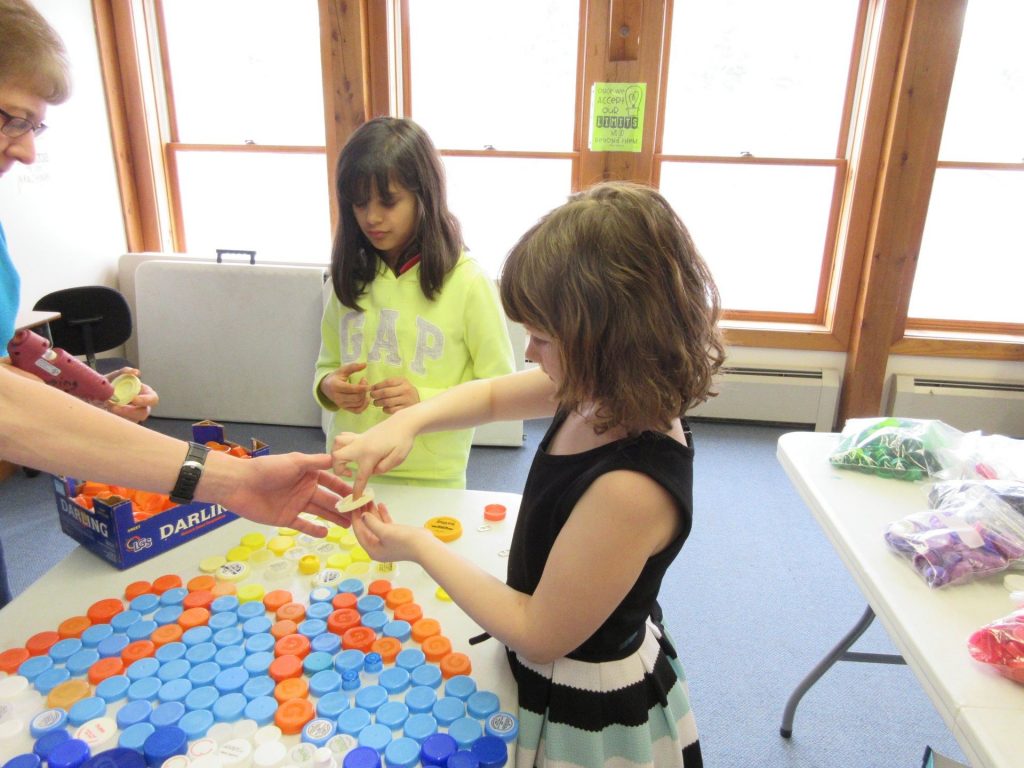
Well, the 2nd/3rd grade scientists have collected an amazon-size box of bottle caps so far and have thought of many, many uses for them, including game pieces, catapult projectile holders, and puppet eyes. This week, they designed a mosaic art piece made out of the bottle caps as a permanent addition to the MakerSpace. The bottle cap tail will stretch around the room!
Thank you, Wesley, for helping MVCS citizens to grow in their stewardship of this marvelous planet God created.
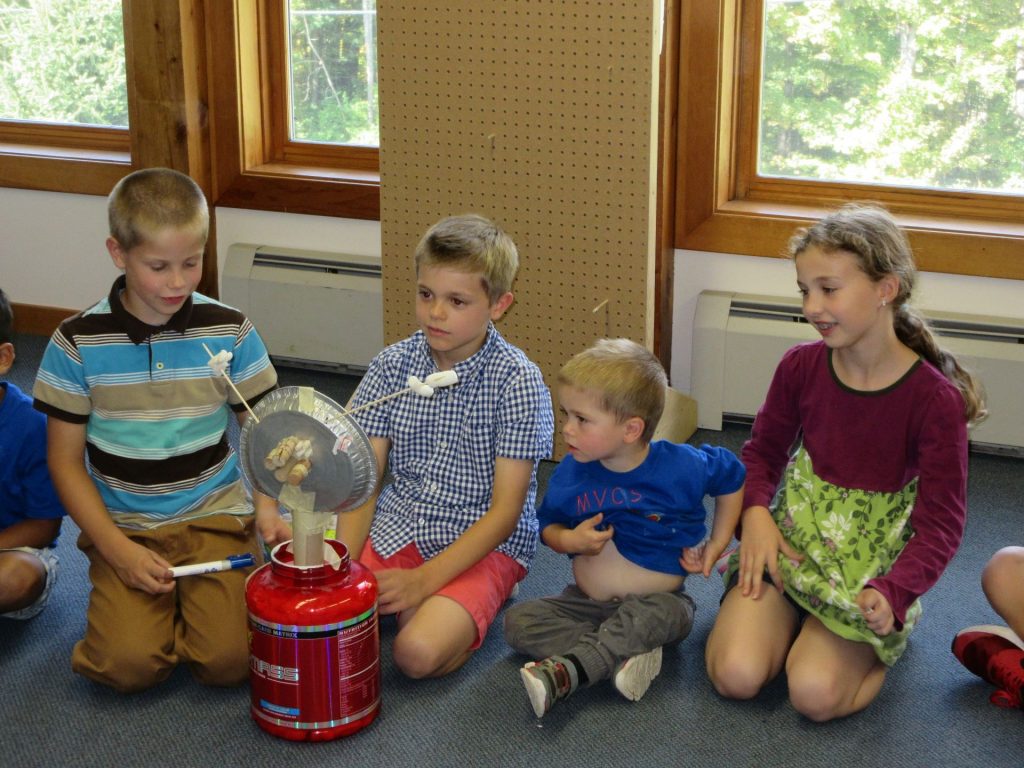
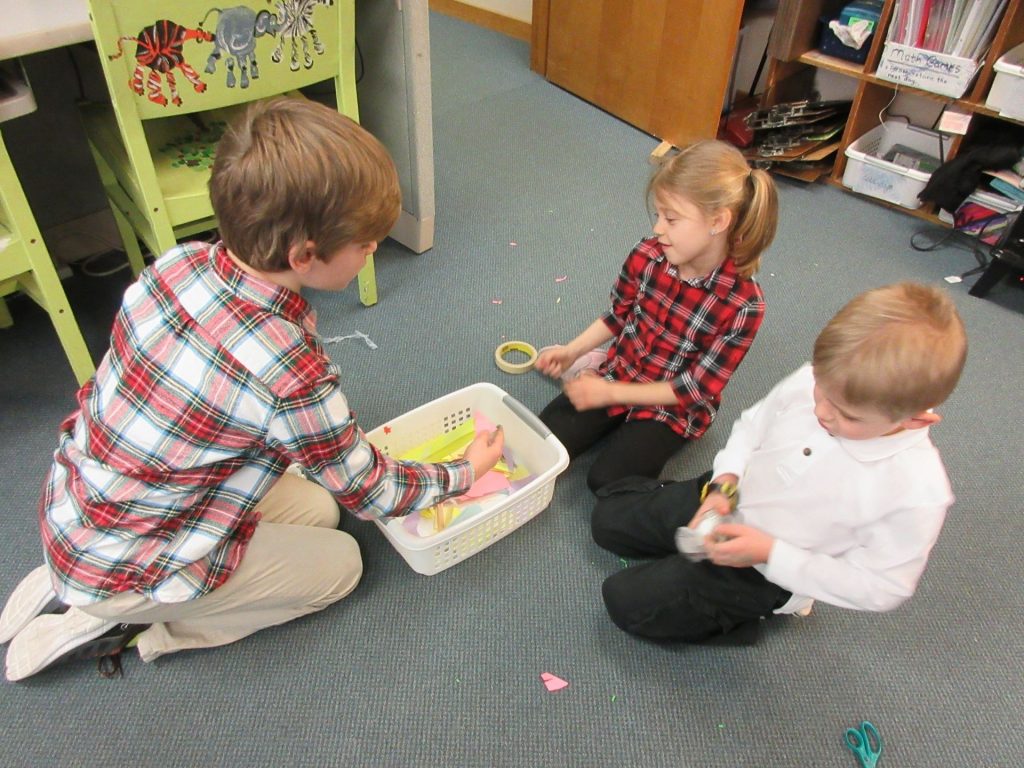
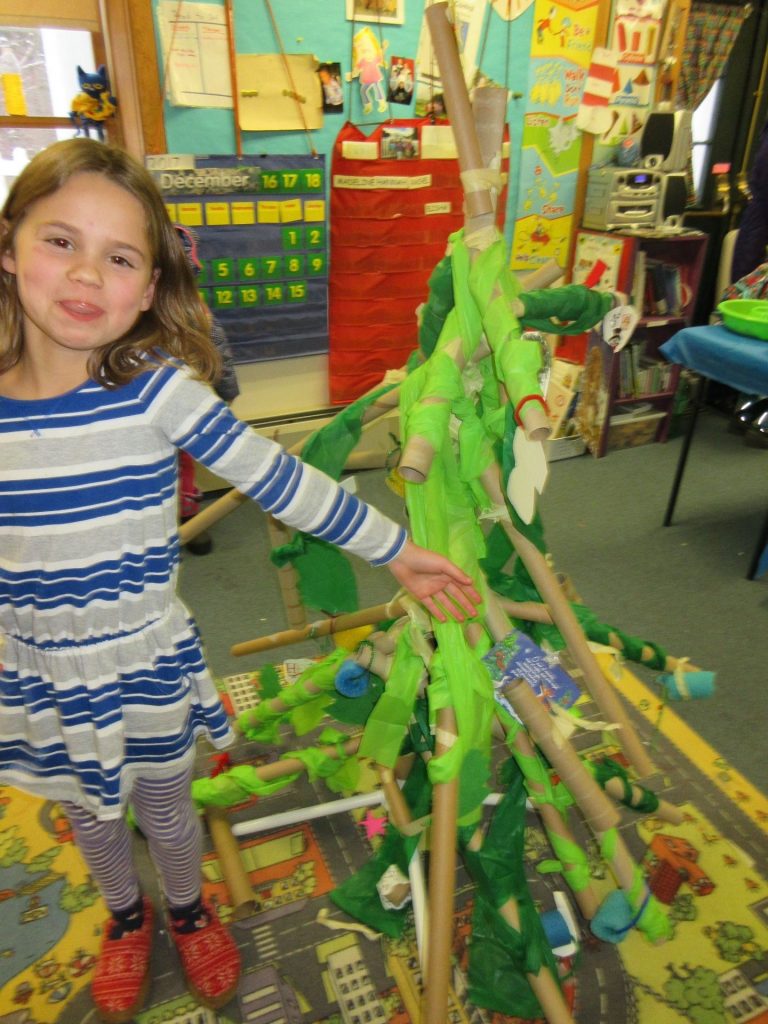
Throughout the year, the preschoolers and their 2nd/3rd book buddies have done STEM stations together using recyclables.
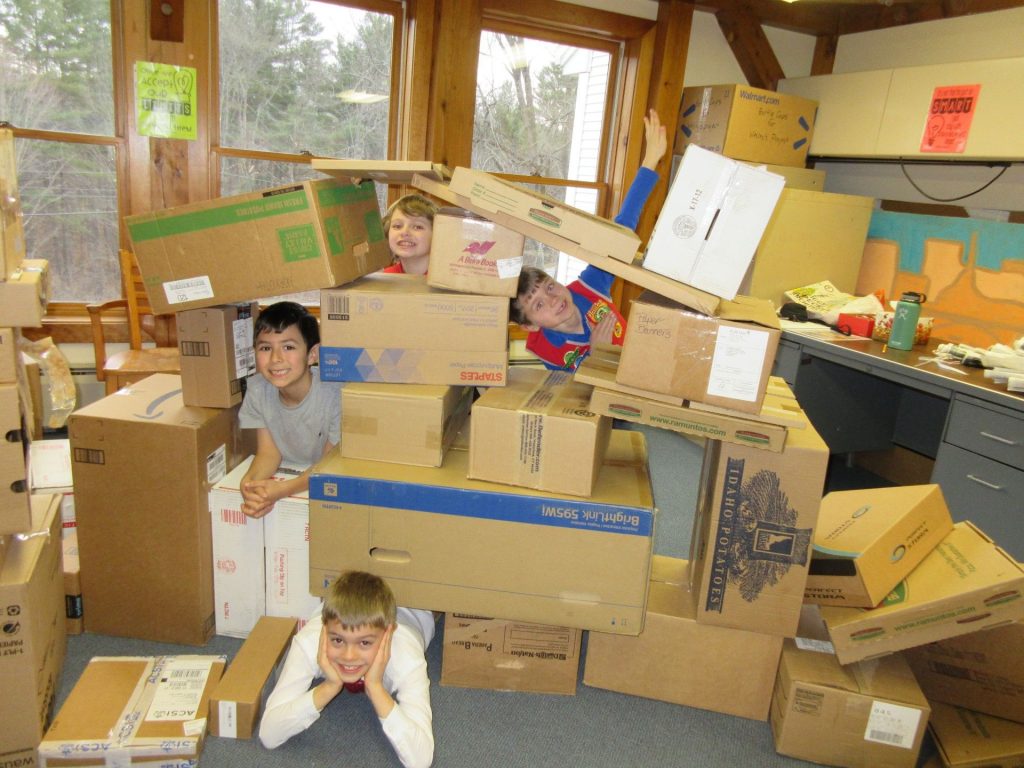
Students reused boxes as building materials during an architect station on Young Reader’s Day.

After reading novels, young engineers created solutions to problems within the story using our MakerSpace materials.
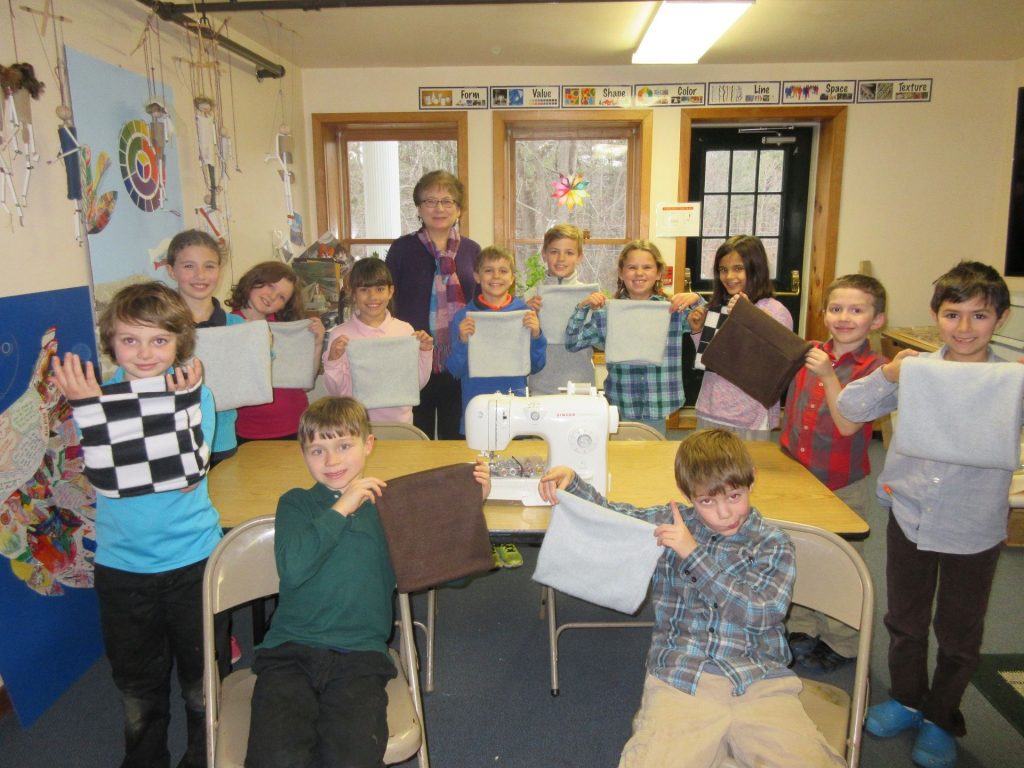
The Christmas giving project of blessing bags for the Haven included some neck warmers sewn with fleece scraps donated from local craftspeople.
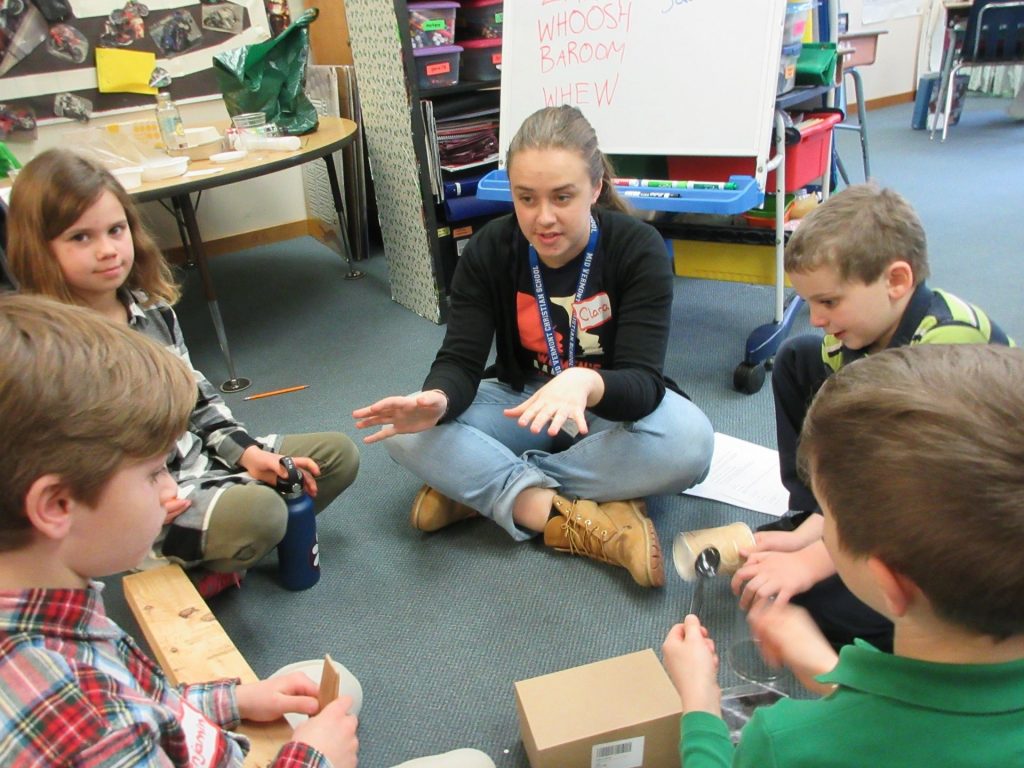
During their poetry unit, the 2nd/3rd graders invented their own onomatopoeia sounds inspired by reused items.
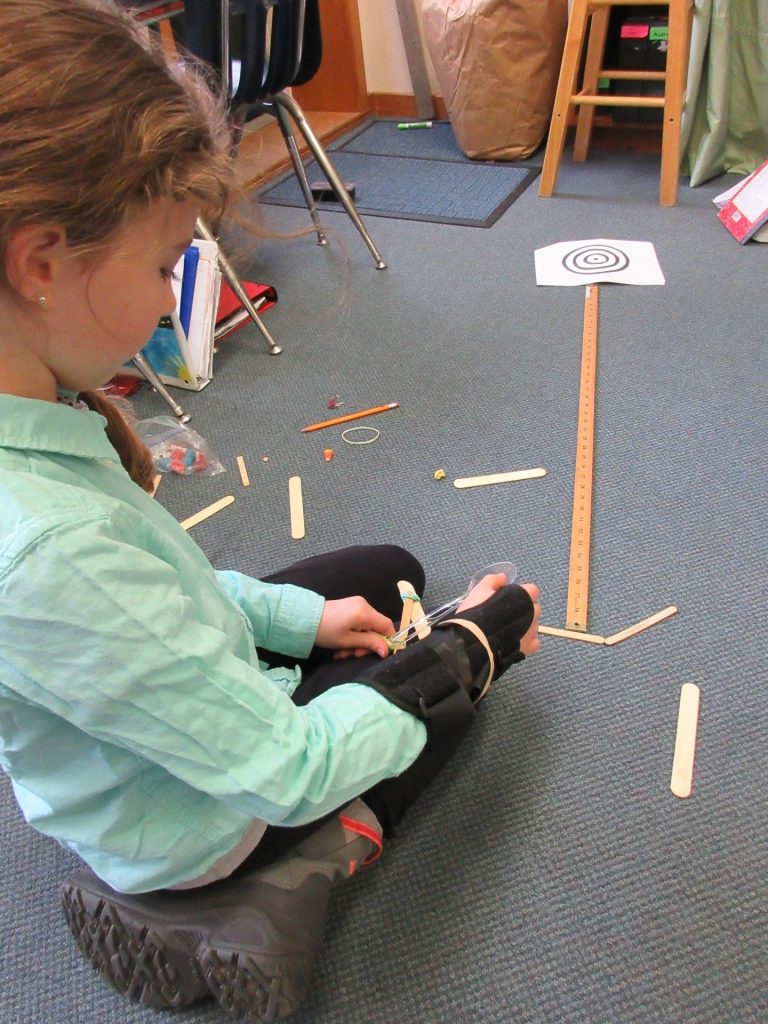
A force and motion catapult challenge is just one of the many science activities involving reused supplies.
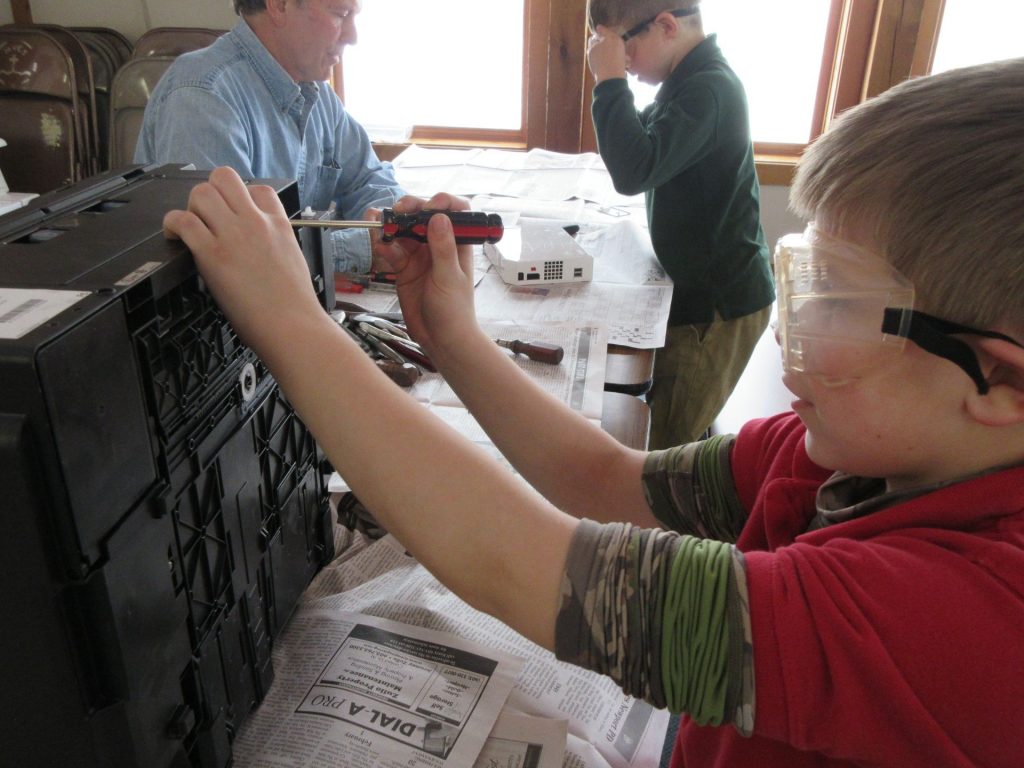
On Take Apart Day, scholars reused broken items to learn more about electronics and to take home parts for their own tinkering project extensions.
